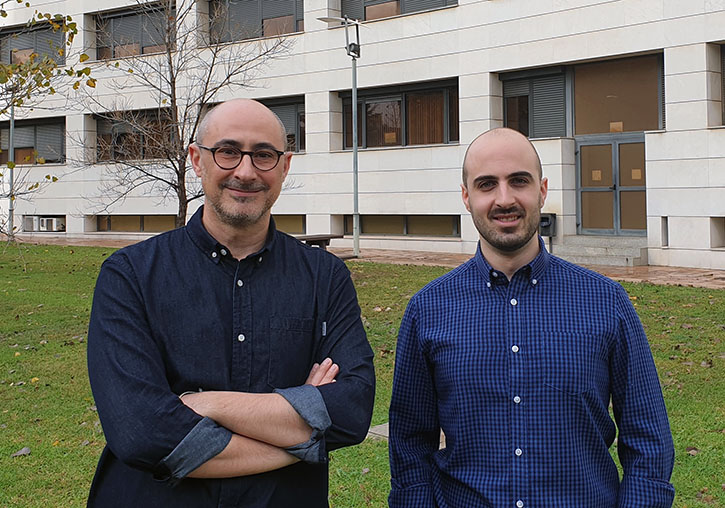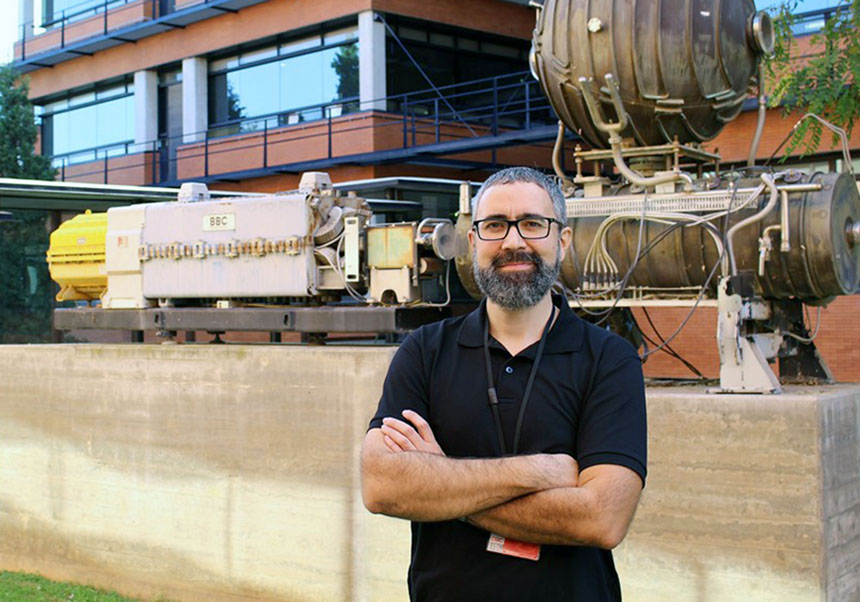Researchers from the Universitat discover a 2D semiconductor which marks a breakthrough in the development of integrated photonic chips
- Science Park
- December 5th, 2019

Researchers from the Institute of Material Science (ICMUV) and the Department of Applied Physics and Electromagnetism of the Universitat de València have discovered a 2D semiconductor with a new orientation of its excitons, quasiparticles responsible for light absorption and emission. This finding, that opens a gateway to a generation of integrated photonic chips, is published in the journal Nature Communications.
The Second Quantum Revolution that is taking place nowadays in Europe, is being led by the Quantum Flagship Programme, which aims to conduct quantum processes from the laboratory to the market. On new two-dimensional materials, such as graphene and 2D semiconductors, the quantum phenomena goes beyond its traditional range of low-temperatures to develop even at room-temperature. The confluence of this unusual event has made two-dimensional semiconductors one of the Quantum Flagship's main stakes in creating disruptive technologies that result in marketable devices that take advantage of the light and matter quantum properties with, for example, applications in the field of signal encryption and safe communications.
In the semiconductors, the responsible particles of the light absorption and emission are electron-hole pairs, also known as excitons. Know and control the properties of the excitons on two-dimensional semiconductors is key the use of quantum technologies which are intended to develop within the framework of the Quantum Flagship programme. It should also be noted that the exciton orientation itself in a two-dimensional semiconductor is able to define which type of optoelectronic device can be produced. This device may be able to take advantage of the quantum light that the two-dimensional semiconductor might emit.
The two-dimensional semiconductors excitons that have been studied so far have a predominantly horizontal orientation, with the advantages and limitations that this involves. Nevertheless, a research group from the Institute of Material Science (ICMUV) and the Department of Applied Physics and Electromagnetism of the Universitat de València, in collaboration with the Heriot-Watt University from the United Kingdom, have demonstrated that excitons in the two-dimensional indium selenide semiconductor (InSe) are orientated perpendicularly at atomic level, unlike the rest of the two-dimensional semiconductors discovered until now.
This new exciton orientation opens initiates a new generation for the creation of novel optoelectronic devices based on two-dimensional materials in which horizontally emitted quantum light is coupled and transported with relative ease by means of waveguides in contact with two-dimensional materials.
The ICMUV group and the Department of Applied Physics and Electromagnetism, which consists of Daniel Andrés Penares, Rodolfo Enrique Canet Albiach, Marie Krecmarová, Alejandro Molina Sánchez, Juan P. Martínez Pastor and Juan F. Sánchez Royo, participates in one of the twenty selected consortia for the first phase of the Quantum Flagship. It is the project named S2QUIP “Scalable Two-Dimensional Quantum Integrated Photonics”, in which quantum integrated photonic circuits will be developed by integrating two-dimensional semiconductor materials compatible with CMOS technology, widely used in the production of traditional integrated circuits. Developed within this framework, the work could resolve many of the bottlenecks described by the US And EU work plans for the development of marketable technologies for Quantum Information Science.
More information:
File in: Ciencias Tecnológicas , Física















